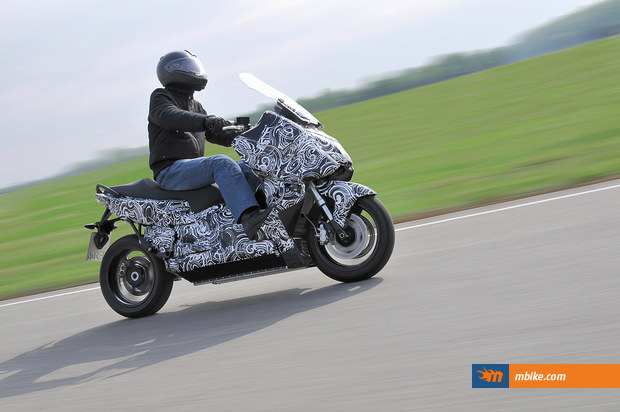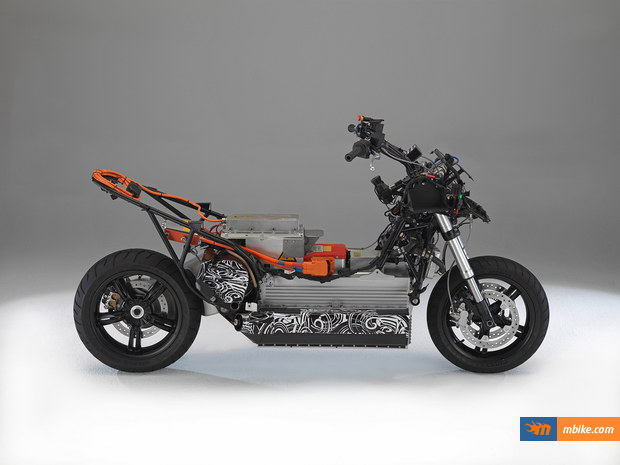BMW took the wraps off a new electric scooter on the 2011 BMW Motorrad Innovation Day. The E-Scooter provides the necessary sustained output and maximum speed for safe and reliable overtaking on urban motorways and also when carrying two people. It is also easily capable of managing hill starts on steep slopes with a pillion passenger. The development study also has the necessary maximum output to be able to achieve acceleration figures within the important 0 – 60 km/h range, which are at the level of current maxi scooters powered by a 600 cc combustion engine.
The high storage capacity of the battery allows a daily driving range of over 100 kilometres. In this way, the BMW E-Scooter concept vehicle provides a long-term, zero-emissions urban and suburban travel option which is suitable for everyday use. The E-Scooter concept vehicle’s battery is charged at regular household power sockets as found in Europe, the USA, Canada and Japan, so no special charging station is required. When the battery is completely flat, the charging period is less than three hours. However, practical experience has shown that the battery rarely runs out completely, so charging times are generally shorter.
Due to its high output, the BMW Motorrad development study has no hub motor with direct drive or planetary gearbox. Instead, the high-performance electric machine is mounted behind the battery casing. The secondary drive consists of a toothed belt from the electric machine to the belt pulley mounted coaxially on the swinging fork pivot with drive pinion. From here, power transmission occurs via roller chain to the rear wheel. When the E-Scooter is decelerated in trailing throttle or when braking, the energy released is recuperated, thereby increasing the vehicle’s range by between 10 and 20 per cent depending on driving profile.
The electrical components required for the electric drive are installed on the top of the battery casing. The external battery electronics system permanently collects and monitors data such as the temperature and voltage of the battery cells, both during travel and while charging. The power electronics acts as a control system and controls the electric machine. The charging device includes a charge cable which allows the battery to be recharged at a conventional household power socket. In addition to the other components like an ISO insulation monitor, high-voltage indicator and a high-voltage distributor, a DC-DC converter is included. It is required to change high voltage to low voltage power to supply the 12 volt vehicle supply and especially for the control units.
2012 BMW E-Scooter Concept Specifications and Photos
via BMW



